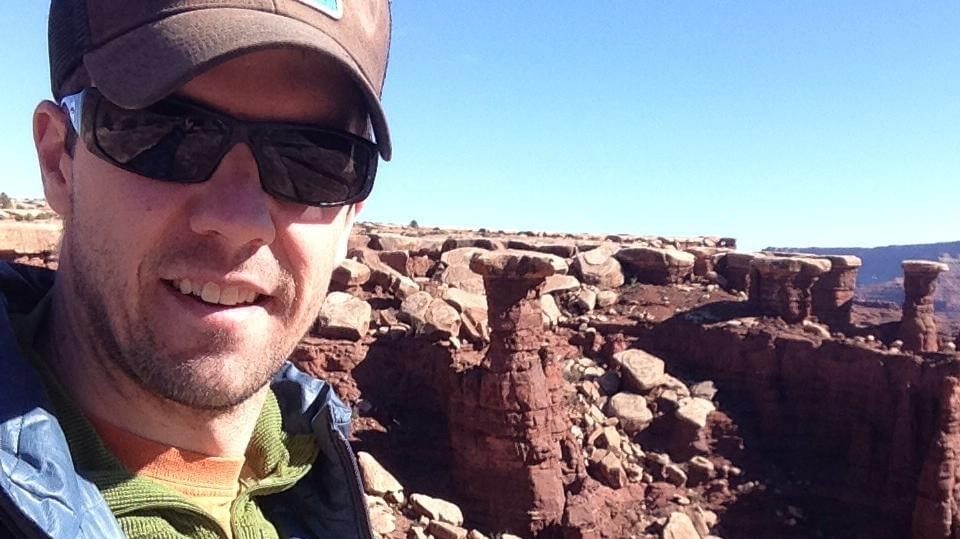Some information may be outdated.
Moab is world-renowned for many different types of outdoor recreation, and a lot of scientific study has gone into developing the best sustainable practices while enjoying nature.
This week, Science Moab is highlighting conversations from experts on many of these sustainable recreation practices, speaking with public policy professor and climber David Carter, climber advocate Ty Tyler, Leave No Trace Director of Research and Consulting Brian Lawhon, and public health professional and former ranger Ginger Allen. Find the original full interviews at www.sciencemoab.org.
Science Moab: Your work described something called common pool resource theory. What is that and how is it used?
David Carter: Common pool resource theory is a theoretical framework that lots of social scientists will use to understand what we refer to as collective action problems. The basic idea is that a common pool resource is an open-access resource. But it’s depletable. So when people use that resource, there’s less of it to go around for other users. It’s a basic governance issue. So for folks misusing an area, the cost to them individually is small or nothing. But it’s a cost borne by everybody who uses and cares about the area. So how do we get folks to behave in ways that may be costlier to them, but that will benefit everybody?
Science Moab: What data do you collect?
Carter: I mostly do surveys and studies of climbers themselves, their perceptions, and their perceived behaviors, their reasons for doing things. For me, this takes the form of surveys on what climbers do, what they perceive, and what they care about. I want to understand what I think of as the institutional landscape of the community. What does the community care about? What did they pay attention to? How much variation is there? Where is their agreement within the community? Collectively, we should be combining that with data from the natural sciences, understanding the landscapes, to ensure sustainable use. Both data sources are needed to have any kind of effective management system.
Science Moab: This year, you worked with the University of Utah to survey climbers who use Indian Creek. What were the big takeaways from that survey?
Ty Tyler: One that stood out is that climbers in Indian Creek were actually really craving education. They’re out there in a pretty open landscape without much signage or information. It was wonderful to see that people were craving some education on the Indigenous history of the area, land management boundaries and policies, raptor issues, and cultural-resource protection. People were also really concerned about the sensitive environment of Indian Creek, and how growing use is starting to impact that sensitive environment — whether it’s from dispersed camping, accessing climbing areas, or visiting cultural resource sites. Another one that was really interesting was that a lot of the survey results pointed toward climbers that were more seasoned, but new to Indian Creek. It’s not really a beginner area; it’s an area that you kind of grow up into. Sometimes we think it’s just a lot of new climbers who don’t know the rules and regulations. It turns out that it’s seasoned climbers who are just not familiar with the place.
Science Moab: What’s the relationship between scientific research and Leave No Trace?
Brian Lawhon: Leave No Trace is science-based in terms of our recommendations, tactics, and techniques. We’re also science-based in terms of how we deploy our education and training. For the first part, the science that has informed the seven principles associated with Leave No Trace is based on a field of scientific inquiry known as recreation ecology, which is the study of recreation-related impacts.
Recreation ecology informs the things we recommend, like camping 200 feet from water or camping on a durable surface to minimize the trampling of vegetation. The other place where science helps us is understanding whether we’re being effective. Are we actually influencing people’s decisions? That’s known as the human dimension of natural resources.
Science Moab: Aside from the unsightliness of human waste in the backcountry, what are the associated health issues?
Ginger Allen: Poop is deadly. You can kill someone if your poop gets into water streams or if someone happens to touch it. There was a study done in the Grand Staircase-Escalante National Monument examining how human waste degrades in the desert. The study found that it takes over a year in some cases for waste to fully degrade here, and you can still find bacteria at harmful levels after a year. They also were able to see how far bacteria traveled. It doesn’t just stay confined in the cathole; it will go up into root systems, like a little superhighway, or it will go into wormholes or other animal burrows and get further outside.
Also, our local visitation is off the charts. We’re hitting that poopy capacity of no longer being able to just bury our waste. The study made the point that in some cases, maybe 2% of harmful bacteria is left after a year, but when you have thousands of visitors, that’s way more than enough to contaminate a water supply and make people seriously ill.
Science Moab is a nonprofit dedicated to engaging community members and visitors with the science happening in Southeast Utah and the Colorado Plateau. To learn more, visit www.sciencemoab.org. These interviews have been edited for length and clarity.
Appreciate the coverage? Help keep local news alive.
Chip in to support the Moab Sun News.





